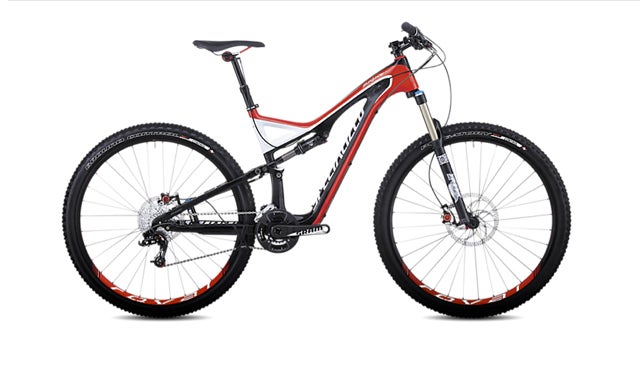Specialized Stumpjumper FSR Expert Carbon 29
Back in 1981, the original Stumpjumper, the first mass-produced mountain bike, revolutionized the sport. Now comes a breakthrough that proves big wheels and big travel are not mutually exclusive. With 5.1 inches of travel front and rear and a laid-back 68-degree headtube, this bike hits the sweet spot. “It’s no racer, nor a point-and-shoot downhiller,” said one tester. “But it’s surprisingly close to both.” The ever brilliant rear Brain shock (firm for pedaling, free-moving for big hits) gets another heady innovation: Autosag. Push this button while you’re on the pumped-up shock, and it adjusts the pressure for you. Similarly, the stiff aluminum Roval wheels and through-axles in the front and back make tough descents both pillowy and precise. But it’s the addition of the telescoping Command seatpost, which drops to either of two set positions with the push of a bar-mounted lever, that really lets you rail down hills. It may sound complicated, but the result is simple, near perfect riding in almost all conditions. 27.3 lbs
CLIMBING: 4
DESCENDING: 4.5 (OUT OF 5)
Scott Aspect 29 Sport
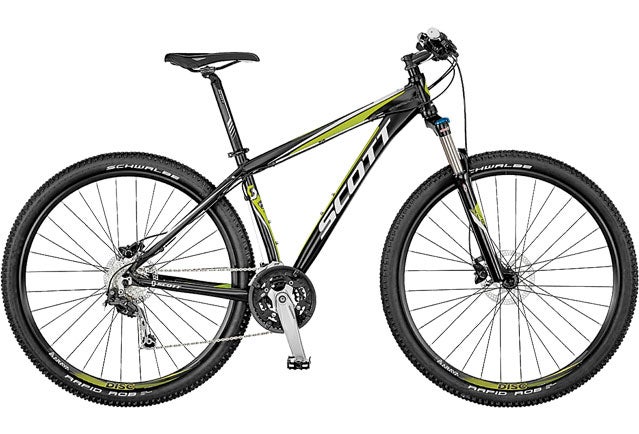
BEST FOR: Anyone with a tight bike budget. THE TEST: Bike snobs like to think you need bump-eating carbon and whisper-light wheels to enjoy riding, but this entry-level hardtail proves them wrong. It’s heavier than most of the full-suspension rides we tested, and the Shimano Alivio drivetrain and four-inch Suntour XCR fork are hardly fancy. But the still climbed every obstacle that other bikes did and kept up on semi-technical singletrack descents. The overall ride was a bit jangly, but if it’s your first mountain bike, or if you stick to mellower trails, that’s sort of beside the point: this is a great bike at a great price. THE VERDICT: Proof that you don’t need to spend thousands of dollars to have fun mountain biking. 29.7 lbs
CLIMBING: 3
DESCENDING: 2.5
Salsa Mukluk 2
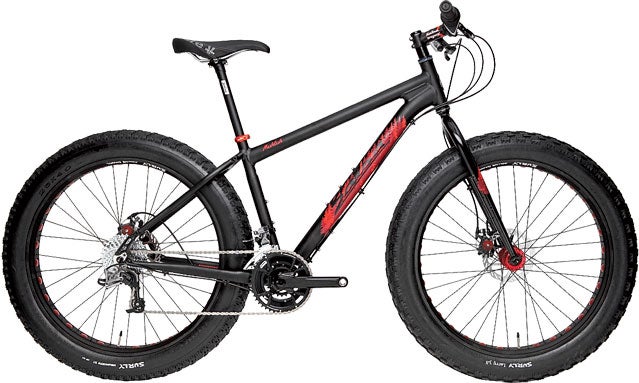
BEST FOR: Funhogs. THE TEST: Sure, we granny-geared this fully-rigid fatty through the snow to the top of , our local ski hill, a few times and laughed our way down corduroy runs. But we also blasted it around desert singletrack, where the nearly four-inch tires gripped better than anything else we tested. And because you can run them at a superlow air pressure (we had ours around 10 PSI), it feels more like a full-suspension bike. The ’s aluminum tubes and perforated rims total just 32 pounds, and the handling is astoundingly quick. As with all Salsas, the parts—including SRAM X7 GripShifts (easy to operate in gloves) and BB7 mechanical brakes (won’t freeze)—are all top quality. THE VERDICT: You’re going to see more of these on the trails, snow or not. 32.1 lbs
CLIMBING: 3
DESCENDING: 3.5
The holes in the rims on the Mukluk and many other fat bikes aren’t just for looks. They trim weight off the wheels, which would otherwise be heavy and sluggish, without compromising strength or stiffness.
Jamis Dragon 650B
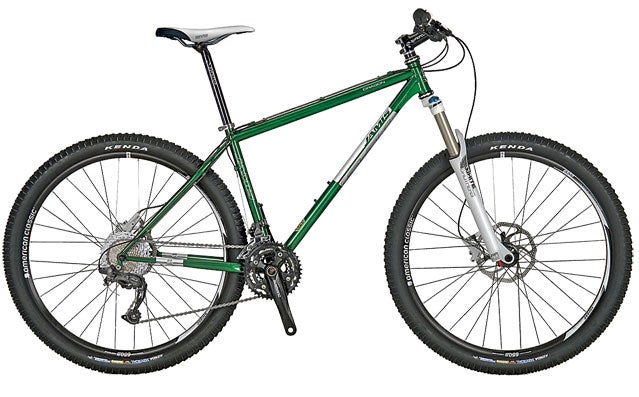
BEST FOR: Splitting the difference. THE TEST: Can’t decide between 26 and 29? Go , which is 27.5 inches for those of you who don’t read the bike mags. You get wheels that feel as agile as 26ers but have many of the rolling benefits of bigger hoops. As for the rest of the bike, it’s typical hardworking Jamis stuff: a Reynolds steel frame that kills bumps like a road grader; snappy, high-value Shimano SLX components; and a (perhaps too) squishy 4.7-inch White Brothers Loop fork. Bonus: comes with a trim-but-supple WTB Silverado Saddle. THE VERDICT: A fun bike for beating around the trails, though hardly a perfect specimen. Look for lots of 650B competition in 2013. 27.1 lbs
CLIMBING: 3.5
DESCENDING: 3
Diamondback Sortie 3 29
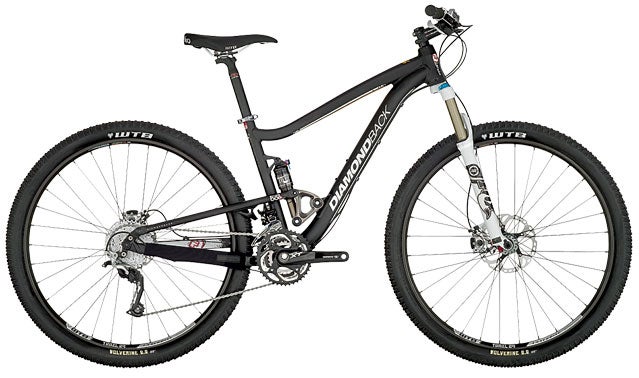
BEST FOR: Rock crawlers, tech lovers, step droppers. THE TEST: Diamondback’s KnuckleBox suspension may look unwieldy—“It seems to defy physics,” noted one tester—but the delivers a surprisingly nimble ride for such a big bike. With 4.7 inches of travel and 29-inch wheels, this is the evolved trail bike we’ve been waiting for. We were able to low-gear up almost anything, and on downhills we felt like bulldozers. On Santa Fe’s most technical trail, we cleared tight corners and steep washouts, never once unclipping on the ass-on-the-tire steeps. Too bad Diamondback discontinued the top-shelf Black model, which would have brought this bike into a much more reasonable weight range. THE VERDICT: A powerful linebacker that could use a diet. 31.1 lbs
CLIMBING: 3.5
DESCENDING: 4.5
Through-axles, which replace standard nine-millimeter quick releases with threaded, bigger-diameter, hollow shafts, are becoming standard. Given the inherent flex of big wheels, the added rigidity is especially helpful on 29ers.
Intense Carbine Carbon
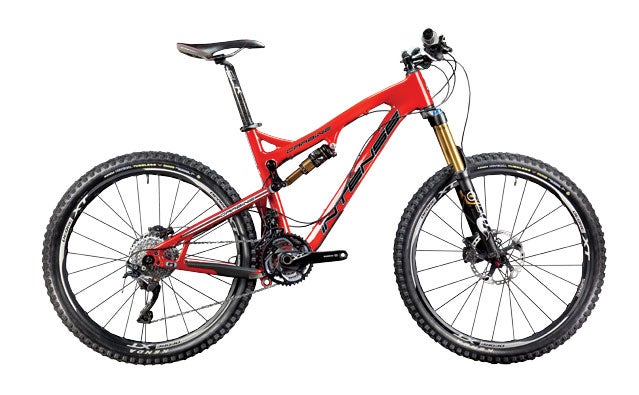
BEST FOR: All of the mountain, all of the time. THE TEST: This is the biggest bike we tested, with 6.3 inches up front and 5.9 in the rear. But it was the ’s uphill skills that struck testers first. “How can a bike this slack engage so well on climbs?” one wondered. The secret is the Fox 36 Talas fork, which drops to 4.7 inches in climbing mode but has a muscular 20-millimeter through-axle for hammer-to-nail directness on chunky descents. Our bike was hung with XTR components (our favorite), XT wheels (“Viagra stiff,” cracked one tester), and a dropper post (which made hairy descents “feel like cheating”). THE VERDICT: The only faster, easier way down is an elevator. 27.8 lbs
CLIMBING: 4
DESCENDING: 5
Trek Superfly 100 Pro
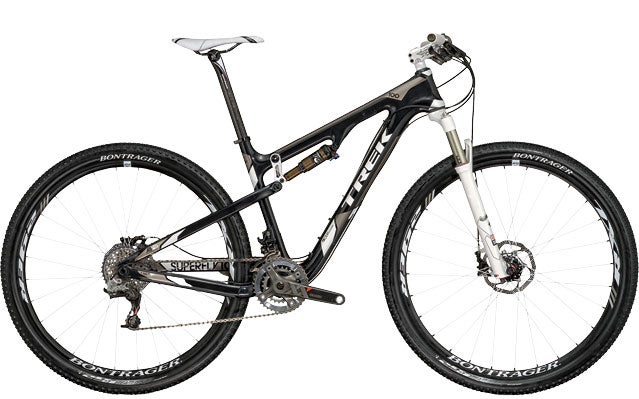
BEST FOR: Flat-out racers. THE TEST: This four-inch 29er race bike was so popular it didn’t sit out a single lap, and testers always returned gushing about its “instantaneous response” and “Crisco smooth” handling. The held its own on the techy stuff too, in part because Trek stiffened it up with a 15-millimeter front through-axle and a 142×12-millimeter rear hub. The scandium Race X Lite wheels were fleet and feathery (without carbon’s durability question mark). And the Bontrager cockpit components were some of the plushest we’ve ridden (love the sweep in the bars), though we’d replace the foam grips with something more substantial. Bonus: The redesigned Bontrager 29-1 Team tires stick like Velcro. THE VERDICT: One tester said it best: “You can have this bike back when you can catch me.” 23 lbs
CLIMBING: 5
DESCENDING: 4.5


